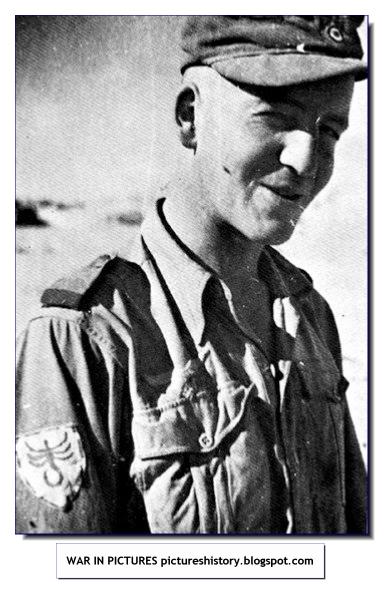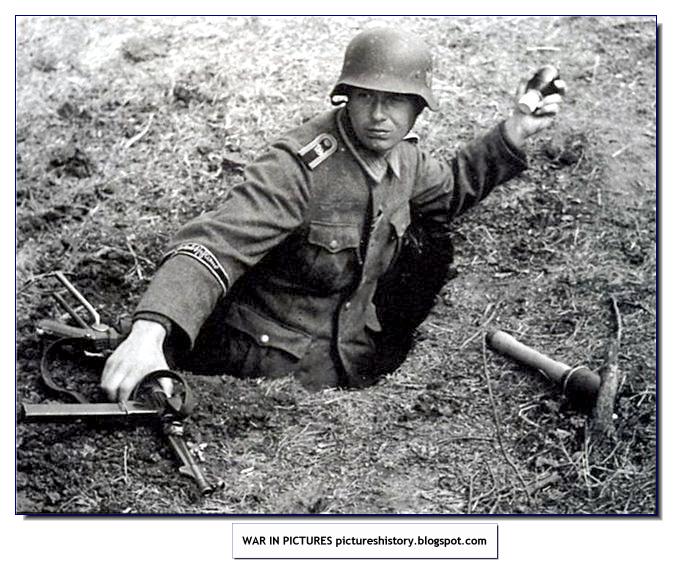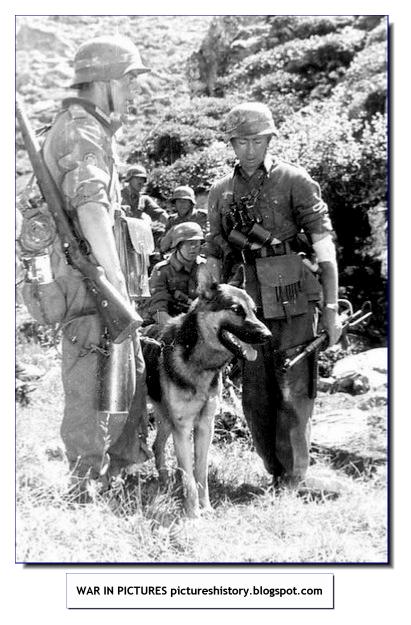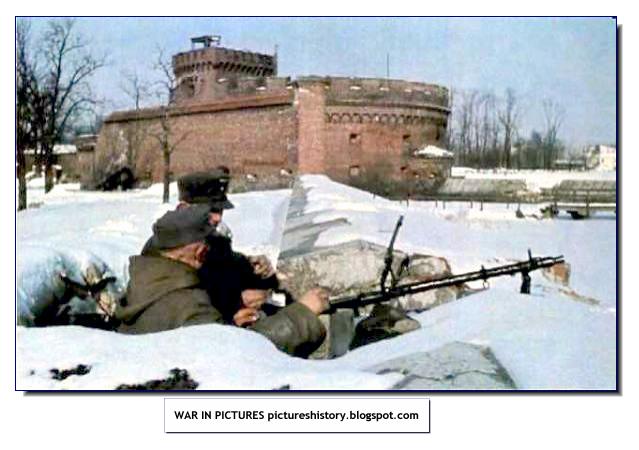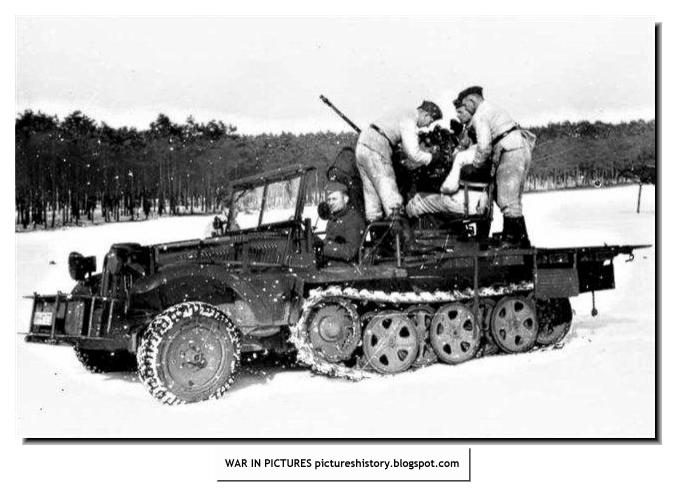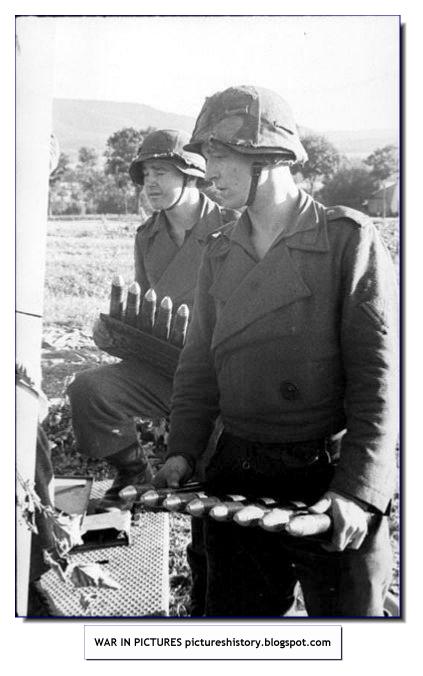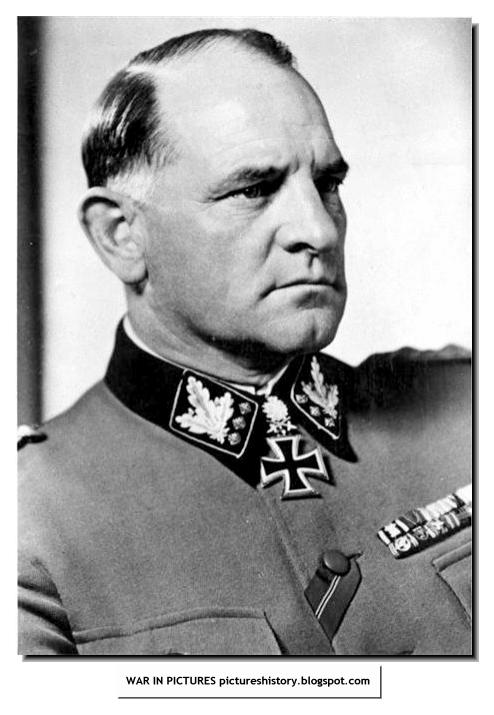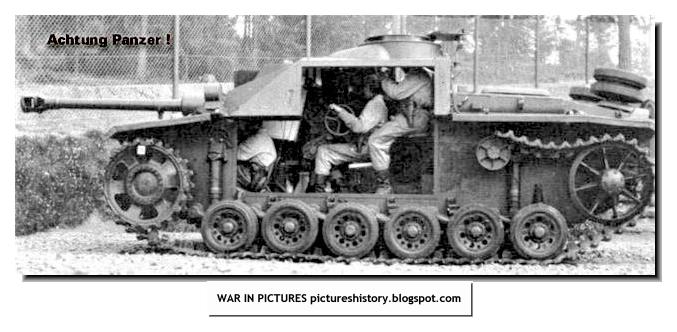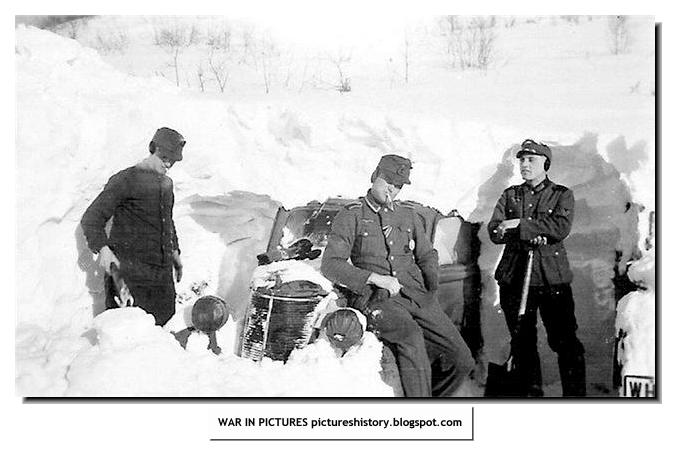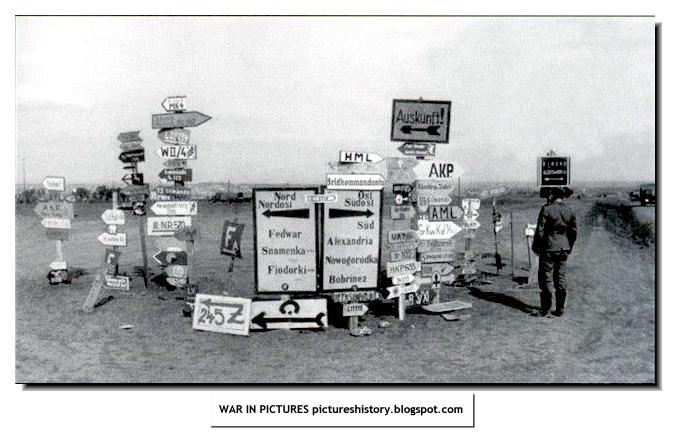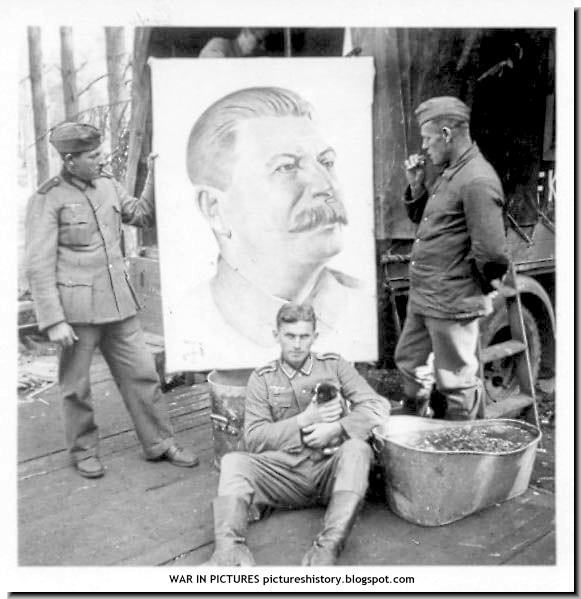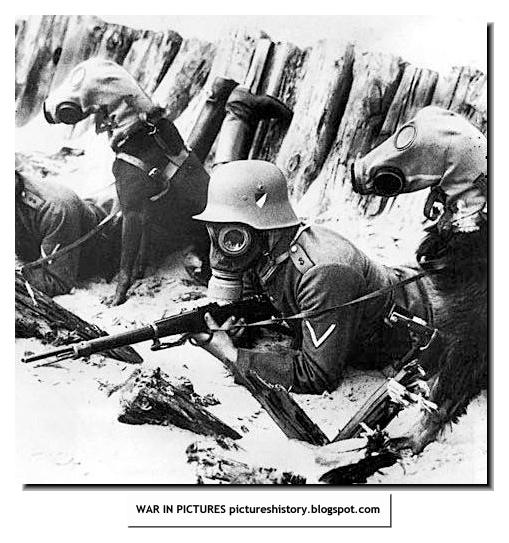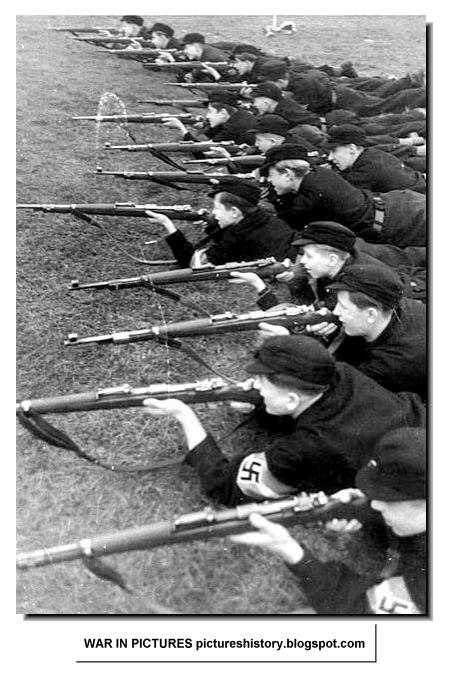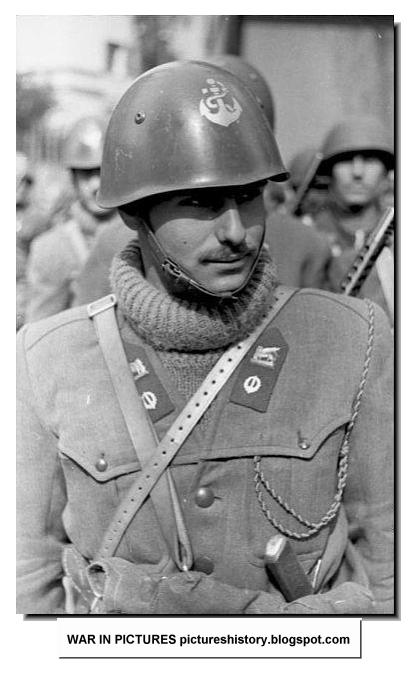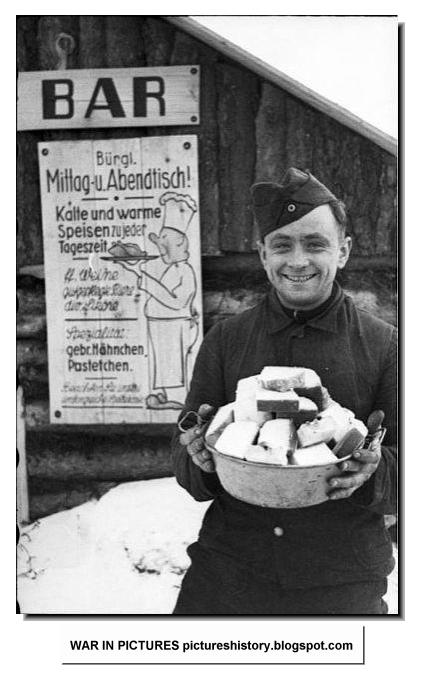Comrade and allies. A German soldier with a Bulgarian soldier
During the Second battle of El Alamein the Folgore Division resisted the attack of the British 131st (Queen's) Infantry Brigade, the 44th Infantry Division, the 7th Armoured Division (Desert Rats) and the Free French Brigade . The remnants of the Folgore Division were withdrawn from El Alamein on 3 November 1942, without water and carrying their anti-tank guns by hand in pieces. The survivors were reorganized into the 185th Folgore Parachute Battalion. At 2:35 pm on November 6, after having exhausted all its ammunition, the remainder of the Division finally surrendered to the British forces. In honour of their bravery, the British commander allowed them to surrender without having to show a white flag or raise their hands.
Italian soldiers stand in rapt attention
Italian soldiers in action
Normandy beaches. June 1944. The song would soon be over
This SS car has met with an accident
A German patrol
MORE WEHRMACHT IMAGES
Italian reconnaissance vehicles AS42 Sahariana.
NOTES
In the 1930s the Italian Army in East and North Africa had used some high mobility vehicles armed with heavy machine guns, but the beginning of military operations in Libya against British forces in autumn of 1940 revealed the good performance of enemy wheeled weapon carriers, some of which were captured and utilized during the Italian counter attacks of 1941. The Italian Army captured a large number of British light trucks, some of which were later armed with Italian-made machine-guns and light guns. The Italians were so impressed with these that in 1942 several AS 37 Autocarro Sahariano (Sahara trucks) were modified for use as weapons carriers. These mainly unarmoured vehicles were used to support the armoured cars (available in insufficient quantity) for patrolling and scouting, especially against the British Long Range Desert Group.
Source: msvn
Source: msvn
German special forces soldier in Africa.
Hungarian soldiersItalian pilots on the Eastern Front.
Italians from the parachute division "Folgore".
THE FOLGORE DIVISION
The Folgore Parachute Brigade is the largest unit of paratroopers (paracadutisti) of the Italian Army; a second smaller unit is the 4th Alpini Regiment Monte Cervino . The name Folgore is Italian for lightning.
The Folgore (Thunderbolt) operates as Light Infantry, capable of both air-landing and parachute operations, and has a marginal mechanized role. It is part of the Projection Forces under the 1° Commando FOD.
In 1941, a Parachutist division was completed and was designated the 185th Airborne Division Folgore. It was trained by German officers for the planned assault on Malta in Operation Hercules. During course of the North African Campaign, it was engaged in ground combat operations.
Italian soldiers stand in rapt attention
Italian soldiers in action
Normandy beaches. June 1944. The song would soon be over
This SS car has met with an accident
Street fight in Smolensk. July 1941
Frightened glum Volkssturm men in March 1945. The end was near.A soldier from the unit "Great Germany" throws a grenade
He seems to be carrying a grenade launcher. German technology was advancedA German patrol
German with a 7.92 self-loading rifle of Walter G-43 (W)
The Gewehr 43 or Karabiner 43 (G43, K43, Gew 43, Kar 43) is a 7.92x57mm Mauser caliber semi-automatic rifle developed by Nazi Germany during World War II. It was a modification of the G41(W) using an improved gas system similar to that of the Soviet Tokarev SVT40.
Germany's quest for a semi-automatic infantry rifle resulted in two designs - the G41(M) and G41(W), from Mauser and Walther arms respectively. The Mauser design proved unreliable in combat when introduced in 1941 and at least 12,755 were made. The Walther design fared better in combat but still suffered from reliability problems. In 1943 Walther introduced a new modified gas system with aspects of the G41(W) providing greatly improved performance. It was accepted and entered into service as the Gewehr 43, renamed Karabiner 43 in 1944, with production amounting to just over 400,000 with production only lasting from 1943 to 1945.
The Gewehr 43 was never mass produced and was never general issue, the official list of issued units was to be 1 in every platoon, and those were to be issued to a select specialist (designated marksman/engineer). Despite the Gewehr being a good improvement over the problematic Gewehr 41, and being a more effective combat rifle over slower bolt-action rifles, the Gewehr 43 was never as reliable or as robust and simple as the Allied rifles like the American M-1 rifle and Russian SVT-40 rifle, nor was the Gewehr 43 a common rifle to see in combat, for every 1 Gewehr 43 produced by the Germans, the Americans produced 50 M-1 rifles and the Soviets produced 20 SVT-40 rifles.
Though the Gewehr 43 was generally considered to be a good semi-automatic rifle, had good accuracy, and did fairly well in combat (better than the G41), it was more complicated to produce than Allied rifles, and was not as mechanically reliable as American and Russian semi-automatic rifles, the Germans were fighting against the tide of war, and the Gewehr rifles were produced much more crudely and primitively than the Allied weapon factories. Since it was never generally issued, or mass produced, the Gewehr 43 was never a big contender among Nations with general issue semi-automatic rifles like the U.S. and the USSR.
Defending the coastGermany's quest for a semi-automatic infantry rifle resulted in two designs - the G41(M) and G41(W), from Mauser and Walther arms respectively. The Mauser design proved unreliable in combat when introduced in 1941 and at least 12,755 were made. The Walther design fared better in combat but still suffered from reliability problems. In 1943 Walther introduced a new modified gas system with aspects of the G41(W) providing greatly improved performance. It was accepted and entered into service as the Gewehr 43, renamed Karabiner 43 in 1944, with production amounting to just over 400,000 with production only lasting from 1943 to 1945.
The Gewehr 43 was never mass produced and was never general issue, the official list of issued units was to be 1 in every platoon, and those were to be issued to a select specialist (designated marksman/engineer). Despite the Gewehr being a good improvement over the problematic Gewehr 41, and being a more effective combat rifle over slower bolt-action rifles, the Gewehr 43 was never as reliable or as robust and simple as the Allied rifles like the American M-1 rifle and Russian SVT-40 rifle, nor was the Gewehr 43 a common rifle to see in combat, for every 1 Gewehr 43 produced by the Germans, the Americans produced 50 M-1 rifles and the Soviets produced 20 SVT-40 rifles.
Though the Gewehr 43 was generally considered to be a good semi-automatic rifle, had good accuracy, and did fairly well in combat (better than the G41), it was more complicated to produce than Allied rifles, and was not as mechanically reliable as American and Russian semi-automatic rifles, the Germans were fighting against the tide of war, and the Gewehr rifles were produced much more crudely and primitively than the Allied weapon factories. Since it was never generally issued, or mass produced, the Gewehr 43 was never a big contender among Nations with general issue semi-automatic rifles like the U.S. and the USSR.
The last desperate defence. The outer perimeter of forts Koenigsberg. 1945.
SS soldiers with machine gun ZB-53 (MG 37 (t)
The ZB-53 was a machine gun used by the Czechoslovak army designated TK vz. 37 ("TK" means "těžký kulomet", heavy machine gun. "vz" means "vzor", Model) and later used by German forces during World War II as the MG 37(t).
It was an belt-fed, air-cooled weapon that served both the infantry support and vehicle weapons roles. The British adopted a version of the ZB-53 as the Besa machine gun for their armoured forces.
Allies. German and Hungarian soldiersIt was an belt-fed, air-cooled weapon that served both the infantry support and vehicle weapons roles. The British adopted a version of the ZB-53 as the Besa machine gun for their armoured forces.
MORE WEHRMACHT IMAGES






